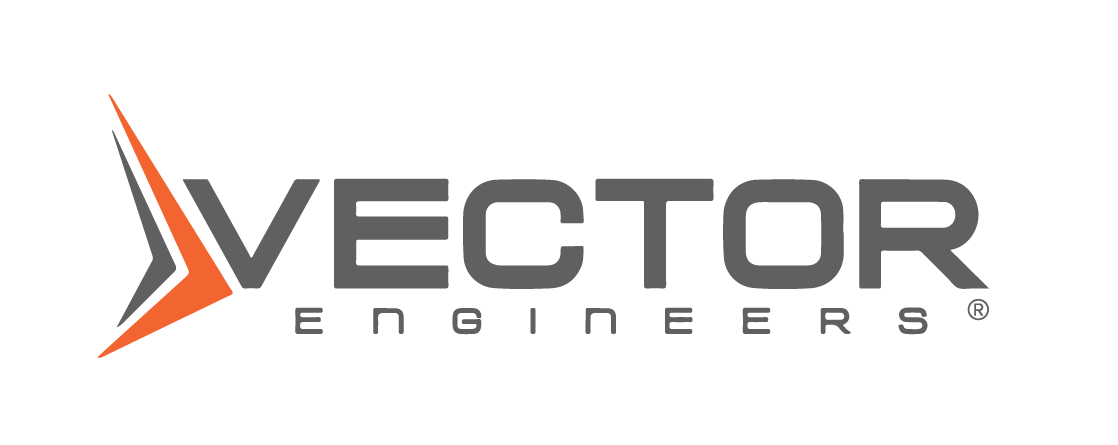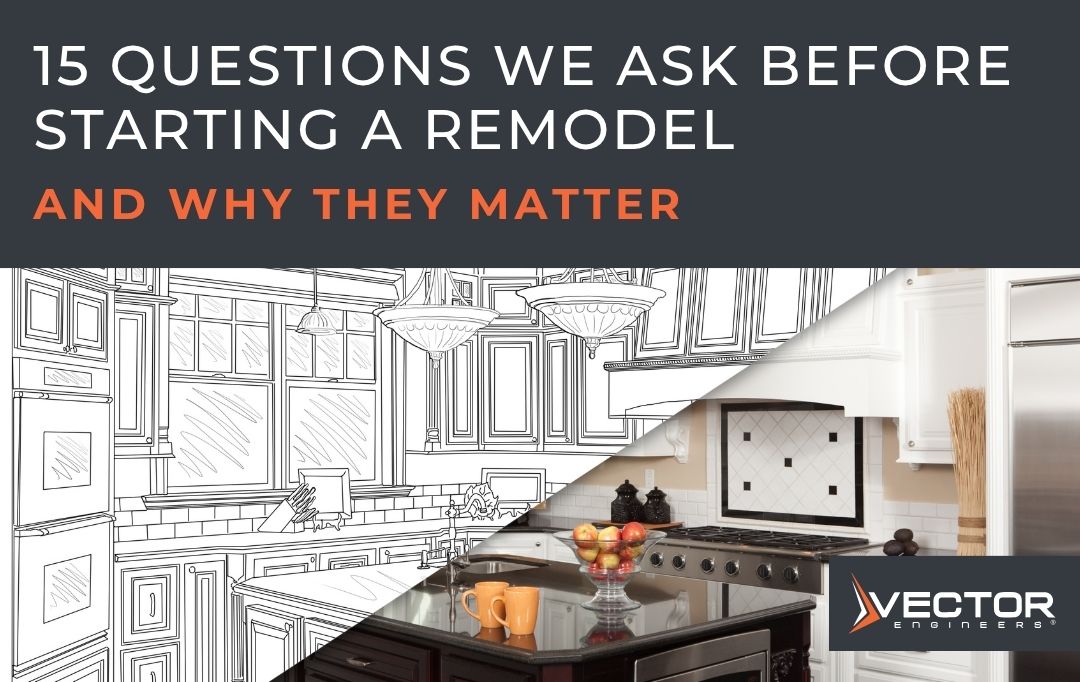15 Questions We Ask Before Starting a Remodel — and Why They Matter
When homeowners plan a remodel, they often picture finishes — new walls, open kitchens, or higher ceilings.
As engineers, we picture what’s holding those things up.
Remodels are some of the most rewarding — and trickiest — projects we take on. Every existing structure is a puzzle of framing, foundations, and past modifications. Before we can provide a fee or start design, we need a clear picture of how your home is built and what’s changing. That’s why, at Vector Engineers, we start with a simple questionnaire.
Here’s a look at why we ask what we ask.
1. Do you have original plans or past remodel drawings?
Original plans tell us how the structure was intended to behave — even if field conditions differ. They save time, reduce uncertainty, and help us price the job accurately.
2. Do you have photos of the affected areas?
Good photos often answer more than a site visit. We can see the framing, finishes, and sometimes even bearing wall clues before stepping on site.
3. What’s the foundation type and condition?
Whether it’s slab on grade, crawl space, or basement, the foundation sets the limits for what’s possible.
Cracks, settlement, or unknown footings can affect how we transfer new loads or design for openings.
4. What’s your framing system?
Rafters or trusses? Solid-sawn or TJI joists? These details determine how far we can span and what must stay in place.
When bearing walls are removed, understanding how loads are currently carried helps us design new beams that make the space feel open — safely.
5. Are there any structural walls or braces being modified?
Shear walls and let-in braces provide lateral resistance. If we remove or alter them, we’ll need to replace that capacity somewhere else.
6. Do you have information about your soil or foundation reinforcement?
A soils report or any record of rebar or post-tension cables is invaluable. It helps us know what’s below the surface before we add weight above it.
7. Will you be using heavy finishes?
Concrete tile roofs, thick stone, or topping slabs add weight the original structure may not have been designed for.
We’ll adjust member sizes or retrofit framing as needed.
8. What are your material preferences?
Some clients prefer all-wood framing. Others like the clean spans of LVLs, Glulams, or steel.
Knowing your comfort level with materials helps us design something that fits both your budget and your builder’s skillset.
9. Will framing be exposed or concealed?
An open timber beam in a vaulted living room is designed differently than a beam buried in a ceiling.
If framing is exposed, we’ll pay special attention to aesthetics and connection detailing.
10. Is there space to install new framing from below?
In crawl spaces or tight basements, access can drive the design.
Sometimes the simplest solution on paper isn’t buildable — and we want to avoid surprises during construction.
11. How will you verify existing conditions?
If finishes are staying in place, we have to design more conservatively.
If walls and ceilings are being opened, we can measure and verify actual framing sizes — which often saves money on overdesign.
12. Who’s the main point of contact?
Clear communication between the homeowner, architect, and contractor ensures that design intent and structural priorities align.
Even a great design can stumble without coordination.
13. What’s your target timeline?
Schedule expectations affect everything from site visits to permit delivery. We want our design to align with your construction pace — not hold it up.
14. Are there future phases planned?
Designing with the next phase in mind often saves rework later.
For example, if a second-story addition is on the horizon, we’ll size beams and footings accordingly now.
15. Would you like us to include site visits or observations?
Not every remodel needs field visits — but when existing conditions are complex, having us onsite ensures the design matches reality.
A good remodel starts with good questions.
The more we know up front, the more efficiently we can design, coordinate, and help you avoid costly surprises.
Our goal is to make remodels not just possible, but predictable — so you can focus on the exciting part: making your space your own.
At Vector Engineers our goal is to solve construction challenges before construction begins. If you’re looking for help with a current or upcoming project, call (801) 990-1775 now for a free quote!

